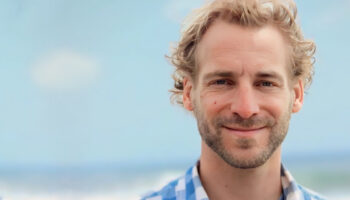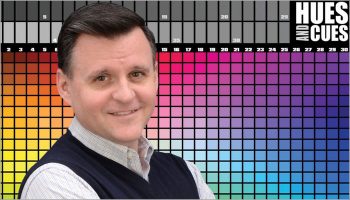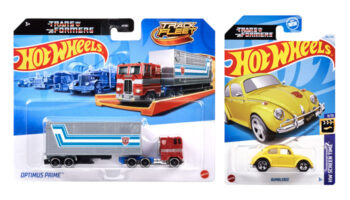Steve Rad, founder of Abacus Brands, on why now’s the right time for a Penn & Teller VR magic set

How Penn & Teller’s licensing deal with Abacus Brands uses the magic of Virtual Reality
Steve Rad. Hi! Who are you, sir, and what do you do?
Hi, Deej! I’m Steve Rad. I’m founder and CEO of Abacus Brands. Abacus Brands is an experience-based learning company where play is honoured, and learning is valued! We take on subjects people love in an experienced-based format. We encompass a wide range including science, animals, the human body, and even food and magic… Whatever the subject, we design and manufacture dynamic educational kits that come alive with the power of augmented and Virtual Reality that inspire, engage and affirm a child’s interaction with the world.
Great answer! And on that, what’s the advantage of learning with a VR toy?
Virtual Reality allows us to add that additional layer. Traditionally, we learn from a book and through hands-on play. Virtual Reality allows us to teleport you into another world, so that you can feel and emotionally experience the content in a layered format. But kids are now learning differently, and we have to not only catch up but adapt to those learning patterns.
Catch up and adapt?
Right! Because the traditional ways of learning are no longer as valuable or viable. If we want information to penetrate, we need to adapt to new and dynamic play patterns that encompass learning. We have to recognise the new thresholds and develop the necessary milestones and criteria to be effective. That’s what Abacus does best. We push the envelope on electrifying content into a digestible format that could be absorbed by today’s youth.
Given your educational drive, then, some people might be surprised to hear that you hold a number of licenses. How did your first one come about?
Actually, our first license happened because of COVID. Abacus Brands launched in 2020: we had four items at New York Toy Fair in February. Of course, COVID then hit almost immediately. We were really blindsided because we’d spent around two years developing these really cool Augmented and Virtual Reality educational toys. And all of a sudden it was like, “Well, you can’t go out and sell them or show anyone or talk to people about this…”

Wow. I think that’s easily forgotten companies like yours had already invested time, money and resources to launch in 2020. And for some of them, COVID was the end of the journey.
Sadly, yes. And – of course – what we had was really valuable to us! So I immediately started thinking about what we could do to speed track and add credibility to what we’d created. It seemed to me that the answer might be through licensing… Fortunately, I had some resources from my days in the film industry, so I was able to quickly get a hold of Bill Nye…
Bill Nye: The Science Guy?
Bill Nye the Science Guy! We knew that someone like Bill, being a science entertainer, could help deliver the right message on our science kit our VR approach was the perfect platform. So Bill Nye was our first licensing deal because I needed someone with credibility to stand up for our item and say, “This is cool. It works. It has value; I stand by this.” And I just figured and hoped that that would help drive the product in a landscape where the pandemic meant we suddenly didn’t have our own voice.
“…there’s a reason why they’ve never been licensed before…”
Extraordinary story! And it worked, presumably, because one of your more recent licenses is with the magic duo Penn & Teller. That seems like a very unusual but inspired choice! What can you tell me about that?
Ah! Very unusual, yes. You’re spot on for catching that because there’s a reason why they’ve never been licensed before… I think it’s because everybody was trying to figure out how to do a magic set with them. But as a magician yourself, you probably know why we didn’t want to do that; you know what the market’s like… A licensing deal with a magician only adds cost in a world where you’re already competing against 5,000 other magic sets that cost 19.99 and have 1,000 magic tricks in them. Right?
Yes! And with a lot of those sets – not to start me on a rant, Steve – you get maybe four tricks with special props, an impenetrable book of instructions and a pack of cards that makes up the other 996 effects! Kids often lose interest really quickly. Their attention is spread too thin on things that can prove quite difficult.
Exactly! Exactly right. So our take was that this was going to be less about magic and more about confidence… Make it about social skills, make it about public speaking, make it about social awareness… Make it about eye contact, make it about failure; make it about falling on your face and having a backup plan! Make it about trial and error, make it about empowering kids to show you something! Because there’s a lot that goes behind a kid being able to engage someone and be willing to fail…

100% yes! Learning 1,000 tricks is futile. But if a young person learns the skills to perform – really perform – three, four, five tricks that they love at the start… That’s fantastic! Given that, why partner Penn & Teller?
Penn & Teller are two of the greatest showmen in the world! They have the longest-running act in Las Vegas history… And they are top notch guys! So we wanted to partner as a catalyst to storytelling and confidence building.
And that’s why this item has been really successful for us right now – because we allow kids to learn real skills – soft skills – that they’ve maybe never been exposed to… And, yes, at the same time, we do teach magic! But even then, magic has never been taught like this. Here for the first time, a trick is first performed for you in Virtual Reality, then – if you want – you get to see the trick explained and demonstrated for you with multiple camera angles in VR, which revolutionises the way magic is taught.
This sounds great!
It’s just mind blowing! You know, for the longest time, I learned magic from books. I had to go to the library to borrow a book, and flip through these static, black and white pages… And even as I’m reading and learning, I’m asking myself: is going to be a good trick! Right? Like, you can easily invest half an hour or more just learning what a trick looks like! Not even knowing what the outcome’s going to be is a big problem for learning magic.
Completely right. Magic books have treasure in them, but you do have to dig… And dig… And dig! It’s also not very practical, is it? Trying to hold the book open with your elbow because you’re holding props in your hands?
No! And there might be people reading this that’ve never tried to learn magic from a book, but it’ll tell you to – I don’t know – “Hold the deck in mechanic’s grip and get a pinky break.” You’re like, “What?” And even when it explains it, it’s still hard work… “Secretly insert your left little finger into the bottom right part of the deck.” Kids are reading this wondering “What even is this? Am I doing it right?”

All while not knowing if they’re even going to like the outcome! But with this – with Penn & Teller – they show you a trick, you decide if you want to learn it or not… If you do, they then teach you the storytelling, they teach you the confidence… AND they teach you how to do the trick?
You’ve got it. They show you how to get up in front of people, what to do you when you fail or get busted… How do you not panic? How do you not flounder? Do you have a backup plan? They they show you skills that will actually be useful in real life, whether you’re trying to get a girlfriend or a boyfriend or a job! So that’s what this magic trick set is. It’s a social intelligence toy disguised as a magic toy, delivered through some of the greatest showmen of our time, Penn & Teller.
“Some kids grew up in lockdowns… They couldn’t talk to new people for two years!”
It sounds magnificent! I really mean that. Let me ask you this, Steve: why is now the right time for that deal?
I think this would always have been useful, but the timing on it is perfect for us because – unfortunately – of COVID. Some kids grew up in lockdowns, experiencing their first, most impressionable years without being able to interact with people. They couldn’t talk to new people for two years! The opportunity to be in front of others was taken away from them which means they were deprived of the chance to learn these vital social skills. So this is the perfect timing for a toy that instils and promotes engaging other humans in social confidence.
For someone like me that hasn’t reaaaallllllly tried VR, what does the technology involve?
For us, the technology involves creating immersive escapes to whatever world you want to explore. When those goggles go on, Deej, we can teleport you anywhere! All bets are off… We can take you to the moon. We can take you inside the human body. We can sit you down next to a family of cheetahs to watch their behaviours and habitat and their parenting and social skills… All the things you can possibly see in any kingdom, be it animal or be it molecular. So that’s what it can offer.
Wow. Nice pitch!
Now, there’s obviously a huge scale between what VR can do and what it could do, what it’s capable of… For us, we’re using it as a microdose. What I mean by that is we don’t want kids in VR for half an hour! We want 2-3-minute bursts of content that complement the learning experience, whereas the more enterprise VR systems like Apple’s Vision Pro or Meta’s Oculus are designed for gaming, and extended use.

So what do you want to provide?!
We want to provide toys in a set that lets you blow up a volcano with your hands, then go see the volcano in VR! We want kids to grow crystal formations, then go into a VR cave and explore the real stalactite formations… We want you to learn about oil water separation and density, and then take a helicopter ride over an oil spill and see it in real life. So we’re using it to drive the message home; a microdose to further immerse yourself in what you just did in the real world. And that’s what I think is really important: to layer and stack that learning process…
It goes back to my first point: that the way kids can learn could be so exciting… Here, they’re seeing something visually. They’re touching something tangible, they’re doing a project or experiment in the physical world, then teleporting somewhere immersive and experiencing it in a setting that’s relevant to the real world.
You sound enormously passionate about this, Steve. How did you come to be doing what you do?
I’m a film and TV grad from USC Film School. I spent half of my career developing film and TV projects. I’m a writer and a creative at heart. I didn’t, however, have the patience to depend on investors, or others to buy into my ideas, and I didn’t have the patience to struggle like a lot of true artists do in hopes of ‘breaking through’ or waiting for someone to believe in their vision. Instead, I chose a route of trying to take a crack at earning an income and running a viable business.
And out of that was born an entertainment, or edutainment, approach to kids’ learning because I’ve always been drawn to children’s education: children’s books, children’s storytelling… When I was a kid, my mom ran a daycare, and I loved being around kids and putting on shows for them: I have a few kids of my own, so this is just a beautiful gateway; a beautiful channel for me to express my creative ability in an inspiring way that helps educate today’s youth. So I’m the luckiest human on the planet to even have the capacity to be able to do what I do.

Perfect. So, tell me: what other kind of licenses might you be looking for in the future?
Oh, man! We’re taking on everything! I Right now, we’ve started taking on everything from – well, you know what? I shouldn’t really say! The stuff on the horizon is vast. We have a few patents as well, so we’re the only folks that can package a VR kit the way we do. And because of that, there’re scholastic programs coming down the pipeline, and some stuff we’re doing for the educational space for in-school programs, homeschool, educators…
So this is something that schools are embracing?
Oh, yes – the entire school channel is just another vast gateway; it’s a great way to reach more kids. But from a licensing perspective, we’re just getting started. The stuff we’ve done so far has been very strategic; laser focused – but it’s about to really go to the next level this fall.
Well, Steve, I sincerely hope you’ll come back and tell us about some of those things… You’ve really made this Penn & Teller project sound incredible! One last question… What’s the one thing I could’ve asked you today, but didn’t?
You could’ve asked me how I plan to take kids to Jupiter to extract hydrogen samples and how your furniture will turn into a rover that you can drive to interact with other worlds, and how a team of young minds can come into an office and say, “Hey, guys! What if a dinosaur was chasing a jeep and flew off a cliff, and then we turn that into a numeracy or literacy game, or maybe something around language learning? What would that look like?” The answer is whatever you want it to look like because right now we’re living in a crazy landscape in the birth of mixed and extended reality being XR.
XR? Extended Reality?
Yes, sorry! Extended reality. That’s the best of both worlds, being when we merge AR and VR – it’s already crazy but then you throw AI on top of all that… It’s now a truly remarkable, vast world of possibility! And I think it’s so evergreen and so ever changing that developers like me – that are lucky enough to be creating content in this space – have an infinite number of possibilities in terms of what we can do and what we can produce.
I love that you’re so visibly excited; I’m sure that’ll come across on the page!
Well, I am very excited! And I appreciate you making time for us, Deej; I appreciate you including us, and I appreciate you giving a couple fucks about what we’re doing here to change the world! I hope we get a chance to connect and talk more.
It’s my pleasure, Steve! Your Nuremberg team was terrific. You have some wonderful ambassadors for the brand, so it was my pleasure to follow up with you.



























